Review and images by Alopias superciliosus; edited by bmathison1972
I’m happy to be back for my third Shark Week with the Animal Toy Blog, and this year I will be contributing two reviews! First up, arriving just in time for Shark Week, Papo’s newly released thresher shark.
Thresher sharks are a fascinating family of mackerel sharks easily distinguished by their incredibly long upper caudal fin lobes. The upper caudal lobes are about as long as the entire rest of the sharks’ bodies. Thresher sharks use their trademark tails to efficiently aggregate bait fish into condensed schools before “whipping” their tail at blinding speed, stunning groups of fish on impact to then scoop up as an easy meal. Threshers “whip” their tails over their heads, as opposed to side-to-side movement typically used in swimming. Recent research has shown that thresher shark vertebrae vary in form and function across the animal, fortifying the sharks’ vertebral columns to essentially serve as a catapult, launching the tail over the head.
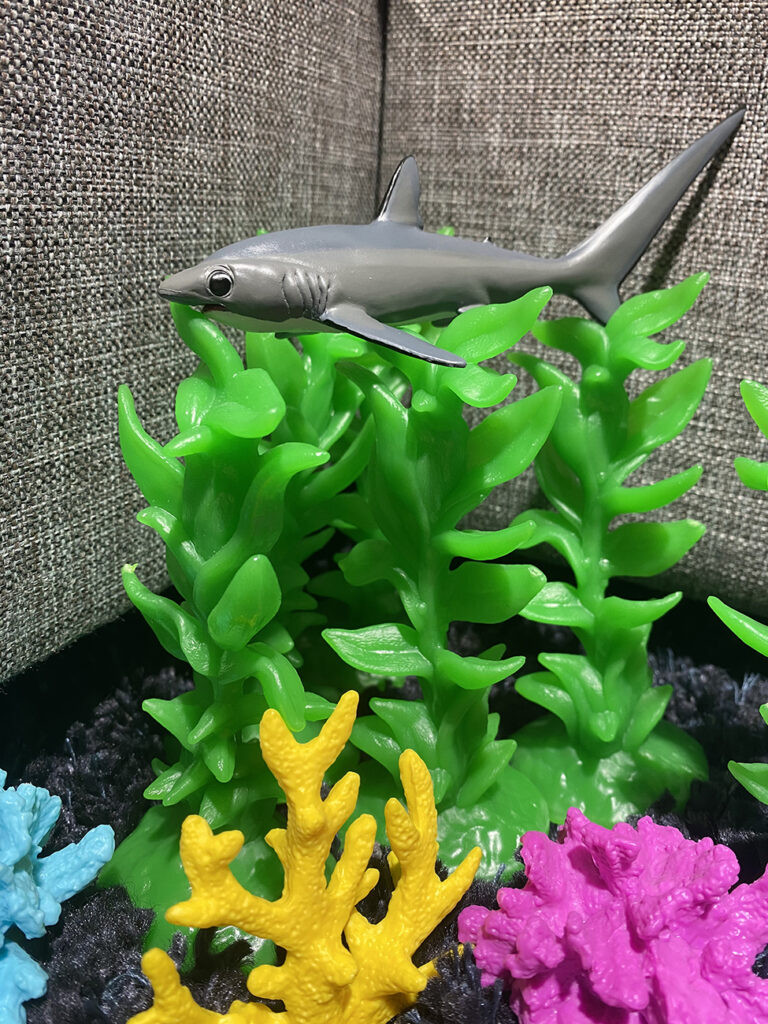
There are three extant species of thresher sharks: the common thresher (Alopias vulpinus), the largest species, with a global range, the pelagic thresher (A. pelagicus), restricted to the Pacific and Indian Oceans, and the bigeye thresher (A. superciliosus), also with a global range. When it was announced that Papo would be making a “thresher shark”, money was on either the common or bigeye, given the French company’s proclivity for making “local” species. Now, with the figure in-hand, I can definitively say that Papo based their figure off of a bigeye thresher.
Bigeye threshers are distinguished from other thresher shark species by their proportionally larger eyes, longer snouts, and distinctive horizontal lateral grooves over their gill slits, which give the sharks a “helmet”-like appearance. All these features are present on the Papo figure.
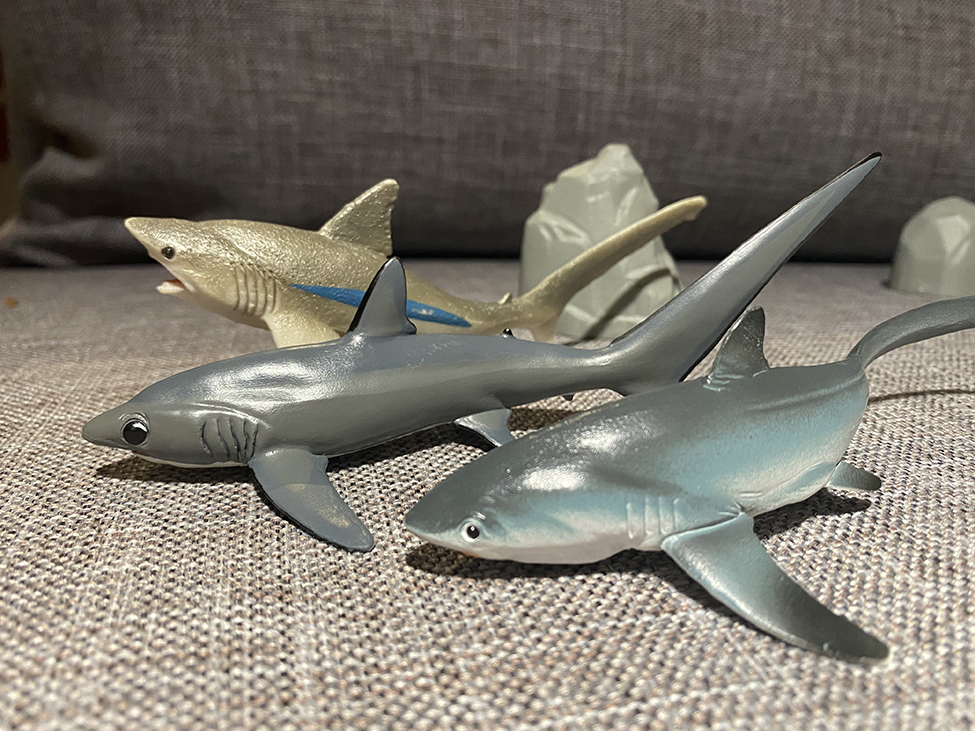
Bigeye threshers are threshers specifically adapted to low light conditions. Their proportionately huge eyes (which can measure up to 3.9 in / 10 cm across) allow for excellent visibility in dark waters. Bigeye threshers are one of the few species of sharks to conduct diel vertical migration, spending daytime in deep water (300-500 m) to avoid predators and ascending to waters less than 100 m during nighttime to hunt.
There have been relatively few thresher shark figures produced, with most being based on the pelagic thresher. Prior to this Papo figure, the only figure of a bigeye thresher was Safari’s version from the Monterey Bay Aquarium Collection, released back in 1996. That MBA figure is a personal favorite of mine, being my avatar image and the inspiration for my forum name; I think it’s an incredibly accurate and wonderful depiction of a bigeye thresher, and, even though it’s nearly 30 years old, has held up remarkably well and is one of my favorites in my shark collection. So this new Papo bigeye thresher has big shoes (fins? upper caudal lobes?) to fill in my eyes.
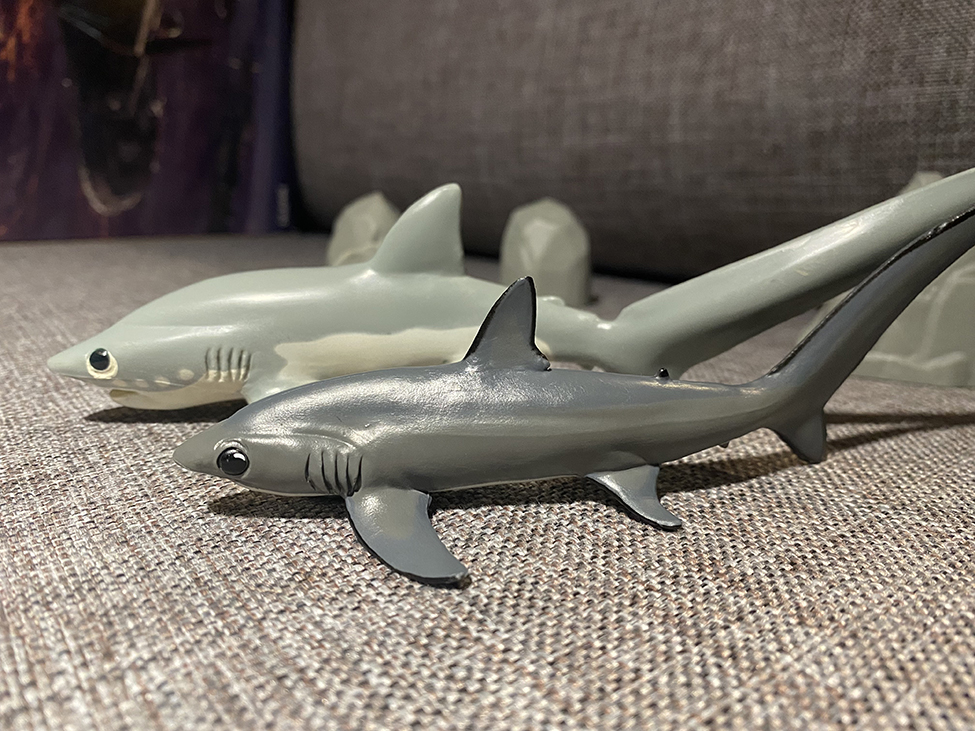
The Papo model does a good job with representing the body of the bigeye thresher. Fin placement all checks out, and the second dorsal fin and anal fin are present and appropriately miniscule. I’m glad these reduced fins were included in the sculpt, as both fins are absent in other notable thresher shark figures, such as the Safari and Toymany pelagic threshers. My only nitpick with the fins is that the primary pectoral fins could probably stand to be a bit longer, and they are done in a very flexible, rubbery plastic. When I received mine, one of the fins was bent horribly out of shape and it took some work to get it back to a more neutral state.
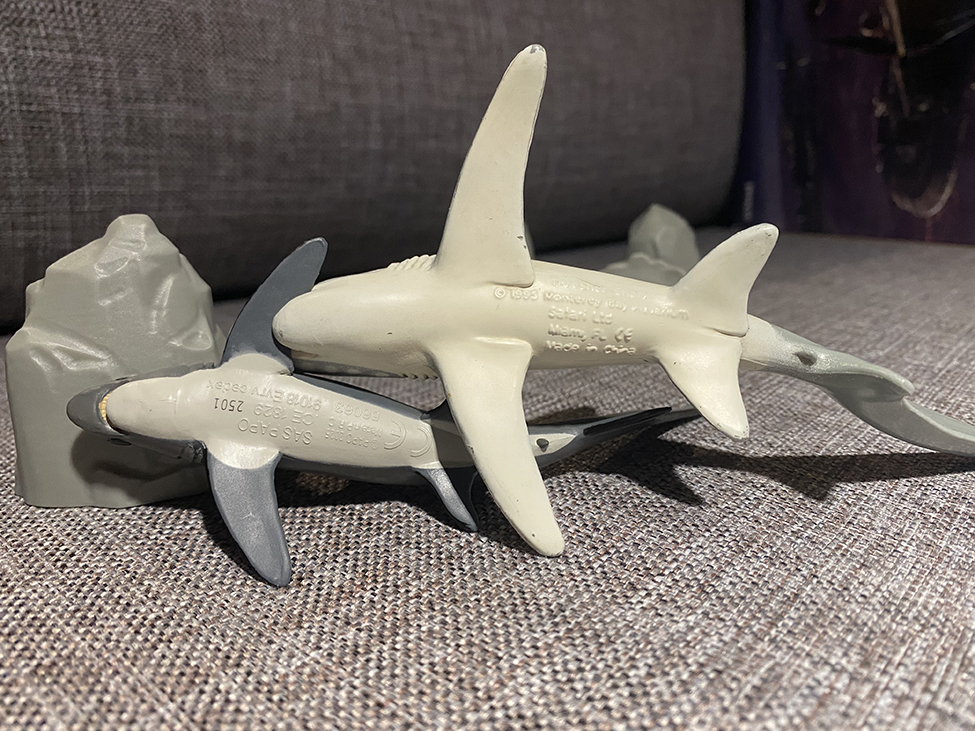
The shark is depicted primarily in a dark grey color, with a secondary blue-gray color applied to the back and ringing the fins. The fins are additionally lined in black, the mouth pink, and the underside white. It’s a decent enough color scheme; bigeye threshers vary in shade from gray to purplish brown. Their skin is also distinctly metallic. I would ideally have liked a glossy shine to have been applied to the figure (something akin to PNSO’s Helicoprion), but I understand this is not something typical for Papo, at least with their shark figures.
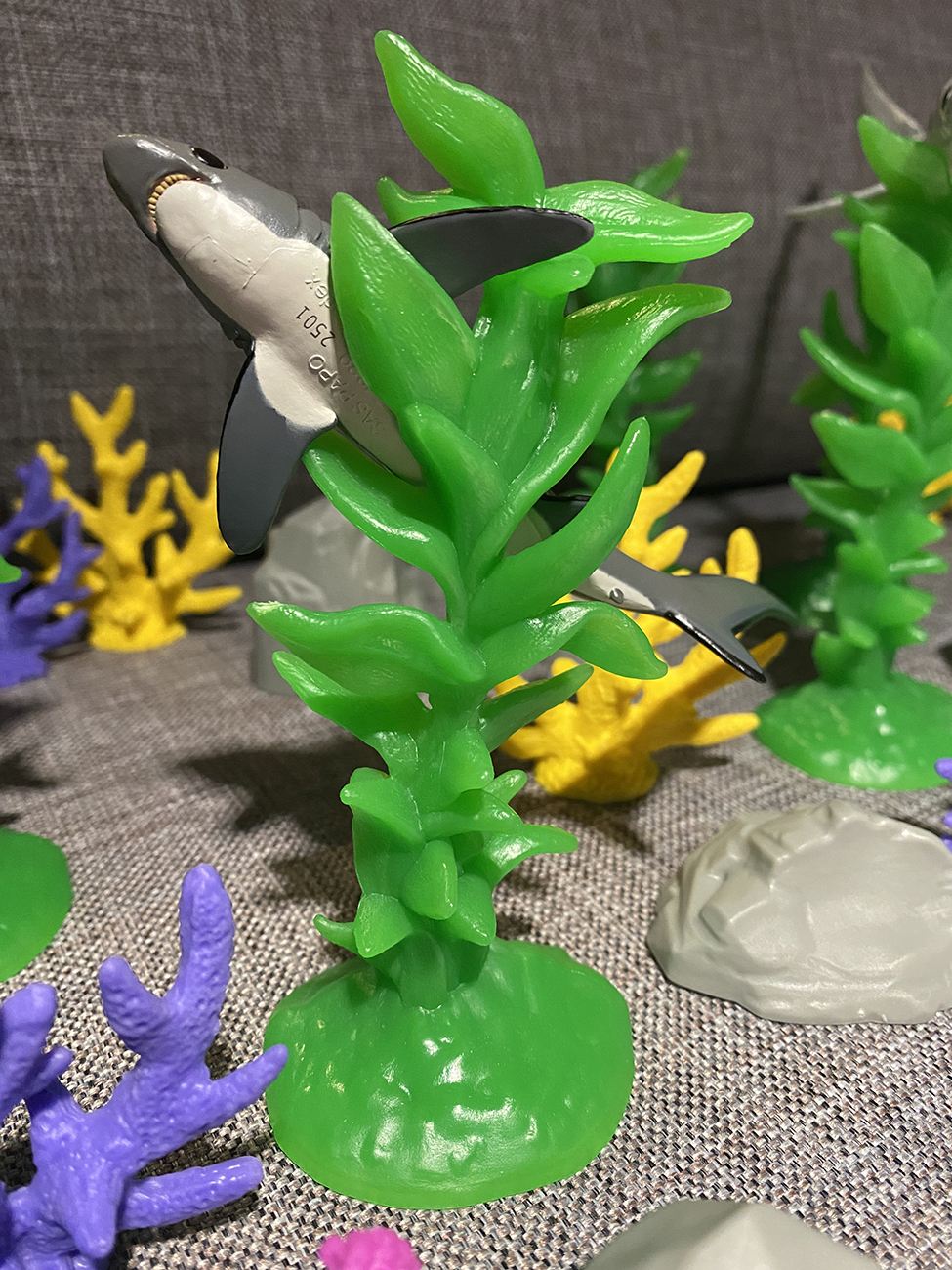
The head is where I start to have a few more issues. The deep horizontal groove is done well, and all five gill slits are present, but something about the snout and mouth throws me off. I think how narrow and abrupt the snout is gives the figure’s face an odd almost bird-like appearance. This is an issue I notice more in hand than through pictures.
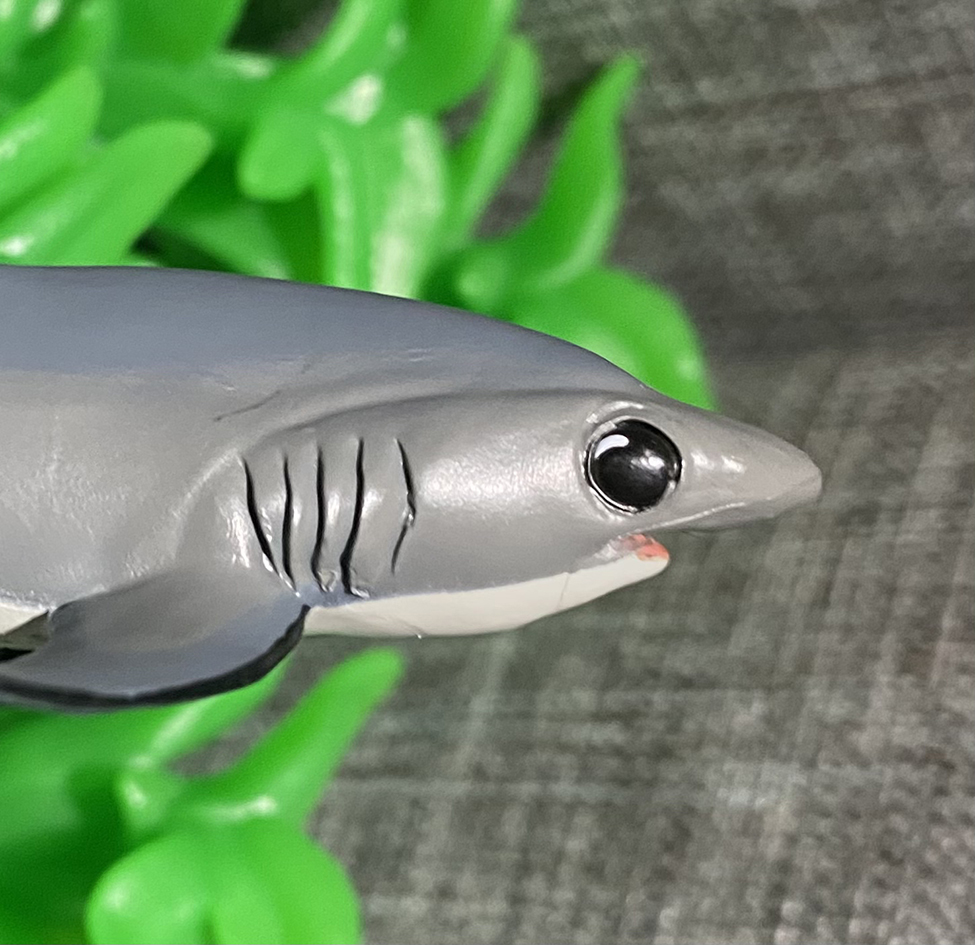
The eyes are depicted as proportionately giant (perhaps even a little too large for the body), but are given a perfectly circular shape. Bigeye thresher eyes are oval, taller than they are wide. As well, the eyes are sculpted entirely on the sides of the head, when in reality, the orbit should extend to the top of the head. Bigeye threshers can rotate their eyes to be upward facing, an adaption suited for detecting predators and prey above while swimming in deep water. Papo also elected to paint the eye entirely black, save a thin line of white meant to be “eye shine”. This is an odd choice; from images of bigeye thresher’s I’ve seen, a prominent region of eye white is seen ringing, below, or above the large black pupil. If Papo wanted to add some more “life” and “dimension” to the eyes, why not include the eye whites? Overall, given shape, placement, and inclusion of eye whites, I think the MBA bigeye did a better job at depicting one of the animals’ most distinctive features.
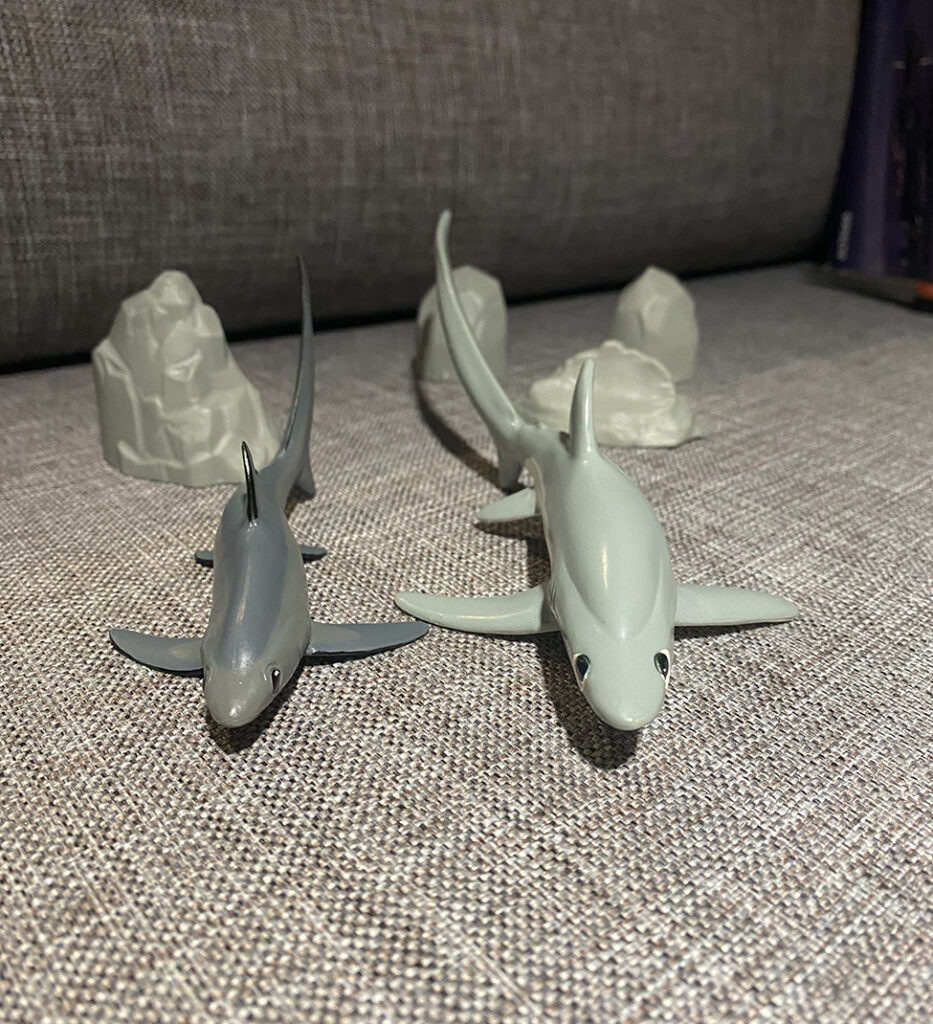
The other big distinctive feature, the upper caudal lobe, I also believe is a bit of a miss from Papo. All thresher sharks have a notched upper lobe at the tip of their tail, and the feature is most pronounced in the bigeye thresher. Yet that feature is entirely absent in the Papo model, with the tail instead tapering to a thin point. As well, the tail is too short. The caudal length of the bigeye thresher should be around half its total length. Here, the figure measures 14.5 cm, with only about 5 cm being made up by the tail (about a third of total length). The MBA’s tail is more to scale and makes it a more striking figure depiction of a thresher shark. With the short tail length and the missing upper caudal name, maybe this thresher had the tip of its tail bitten off?
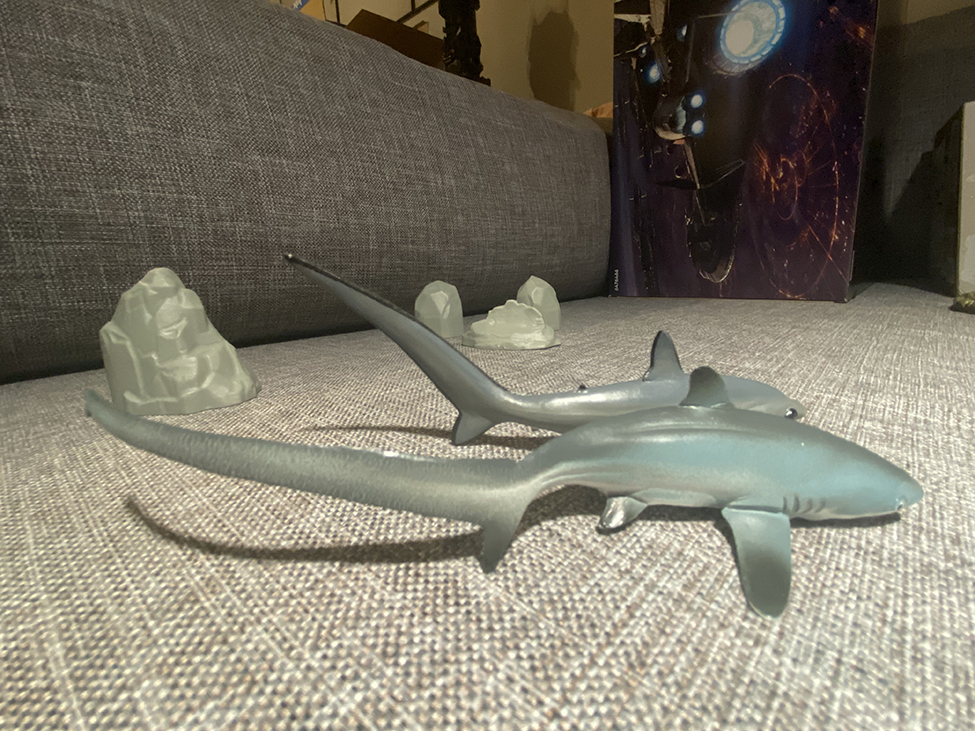
Overall, I think Papo did a lot of things right with this bigeye thresher; with so few good thresher shark figures there are on the market, I always welcome new additions. However, I feel a little let down by Papo here – the two most distinctive features of the bigeye thresher, its eyes and long tail, could’ve been executed better. I recognize, however, that I may be a bit biased here, given my connection and love for the MBA bigeye thresher, as well as the high standards I expect from Papo (their whale shark, leopard shark, and shortfin mako are all highlights of my collection). While I maintain the MBA bigeye is the both the definitive bigeye thresher and definitive thresher shark figure generally, Papo’s thresher is by no means a bad figure, and, given the difficulty of finding the MBA figure these days, would be a worthy entry to any shark or marine life collection.
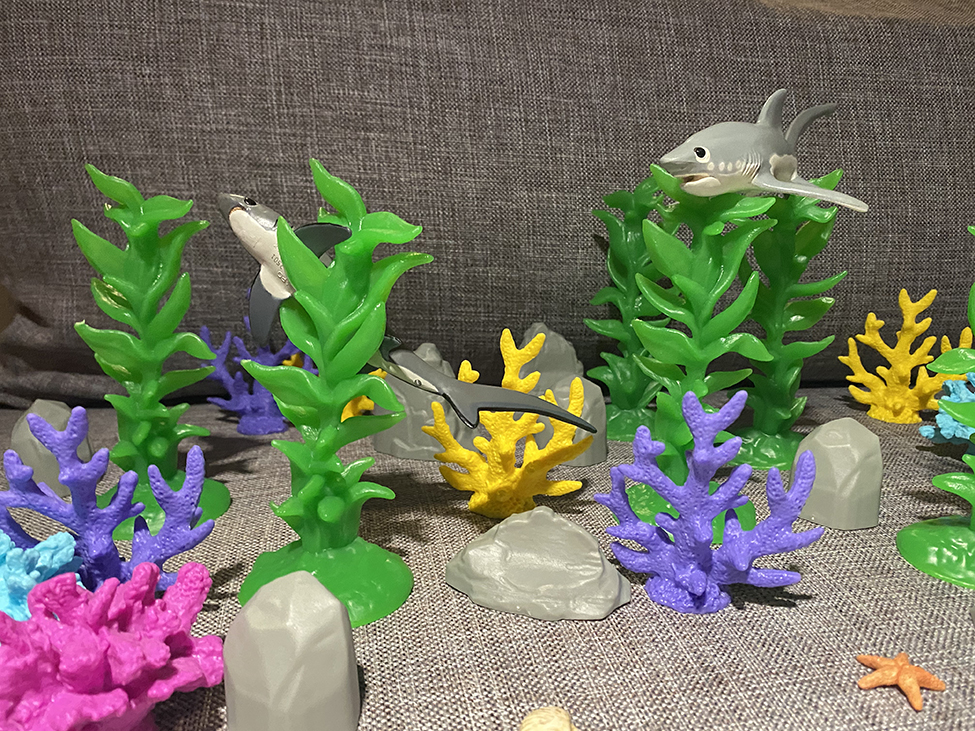
Disclaimer: links to Ebay and Amazon on the AnimalToyBlog are affiliate links, so we make a small commission if you use them. Thanks for supporting us!




I suppose I’ll get this one because of its better availability but I would really prefer the MBA model. Excellent review! Thanks for contributing to Shark Week 2025.
Makes me glad to have the MBA figure! I’d probably still pick this one up if I see it, but I’m not in any rush. Thanks for the review!